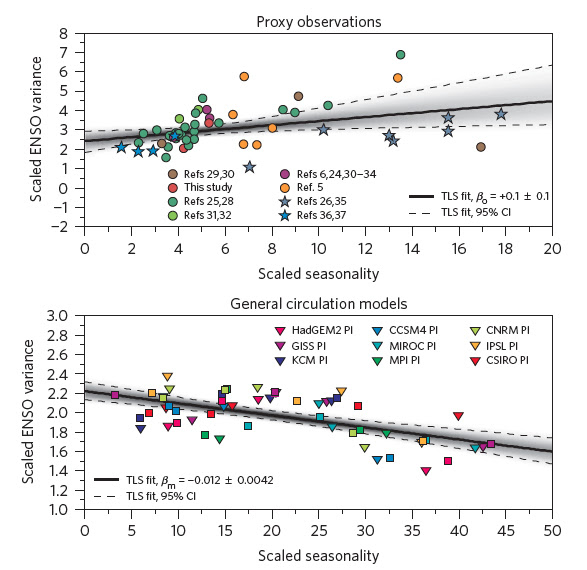The climate is complex and nothing shows that more than when numerical models are forced to stop predicting the past and have to actually project what could happen in the future.
But the past can at least inform if models are really wrong and an analysis of fossil corals and mollusk shells from the Pacific Ocean reveals there is no link between the strength of seasonal differences and El Niño, a complex but irregular climate pattern with large impacts on weather - but the top nine climate models in use today simplistically associate exceptionally hot summers and cold winters with weak El Niños, and vice versa.
That is why climate models had predicted El Niño last year, and then dismissed it as an exceptionally weak one, and did not realize it had not arrived yet at all.
Rsearchers checked climate models against data on shells and fossil corals spanning the Holocene period - the last 10,000 years of Earth's history. The period had similar geography, amounts of ice and levels of greenhouse gases in the atmosphere, making it a good analogue for today's climate.

Graph: El Niño strength plotted against seasonal variability. The top graph shows observations, the bottom shows how the models predicted it would be. (Courtesy of Julien Emile-Geay)
Because shells form by crystalizing calcium carbonate taken from the surrounding water, they record information about the temperature and salinity of that water. For example, the shells capture the prevalence of various isotopes of oxygen, which vary based on sea-surface temperature.
Analyzing the composition of nearly 60 specimens through their thickness, the team was able to reconstruct a detailed history of climate in the tropical Pacific. The corals and clams were taken from various locations throughout the Pacific Ocean, creating a spatially and time-distributed data set that offered insight into both the amplitude of seasons and the intensity of El Niño via snapshots spanning the past 10,000 years.
They then compared this dataset to the predictions of nine state-of-the-art climate models, and found a mismatch: the models generally fail to simulate lengthy periods of subdued El Niños like the one that occurred 3,000 to 5,000 years ago; the ones that came close did so by relying on an Earth-Sun configuration that ran contrary to observed conditions.
"The idea behind this link is based on very well-established physics, so it's appealing to think that nature works this way. But our analysis shows that it's not that simple," said Julien Emile-Geay, lead author of a study contradicting the models and assistant professor of Earth Sciences at USC. "The causes for prolonged periods of weak El Niño are either beyond the current models, or we're missing an important piece of the puzzle. This points to deficiencies in the way these models simulate various aspects of tropical Pacific climate, from average conditions, to the march of seasons, to El Niño itself."






Comments